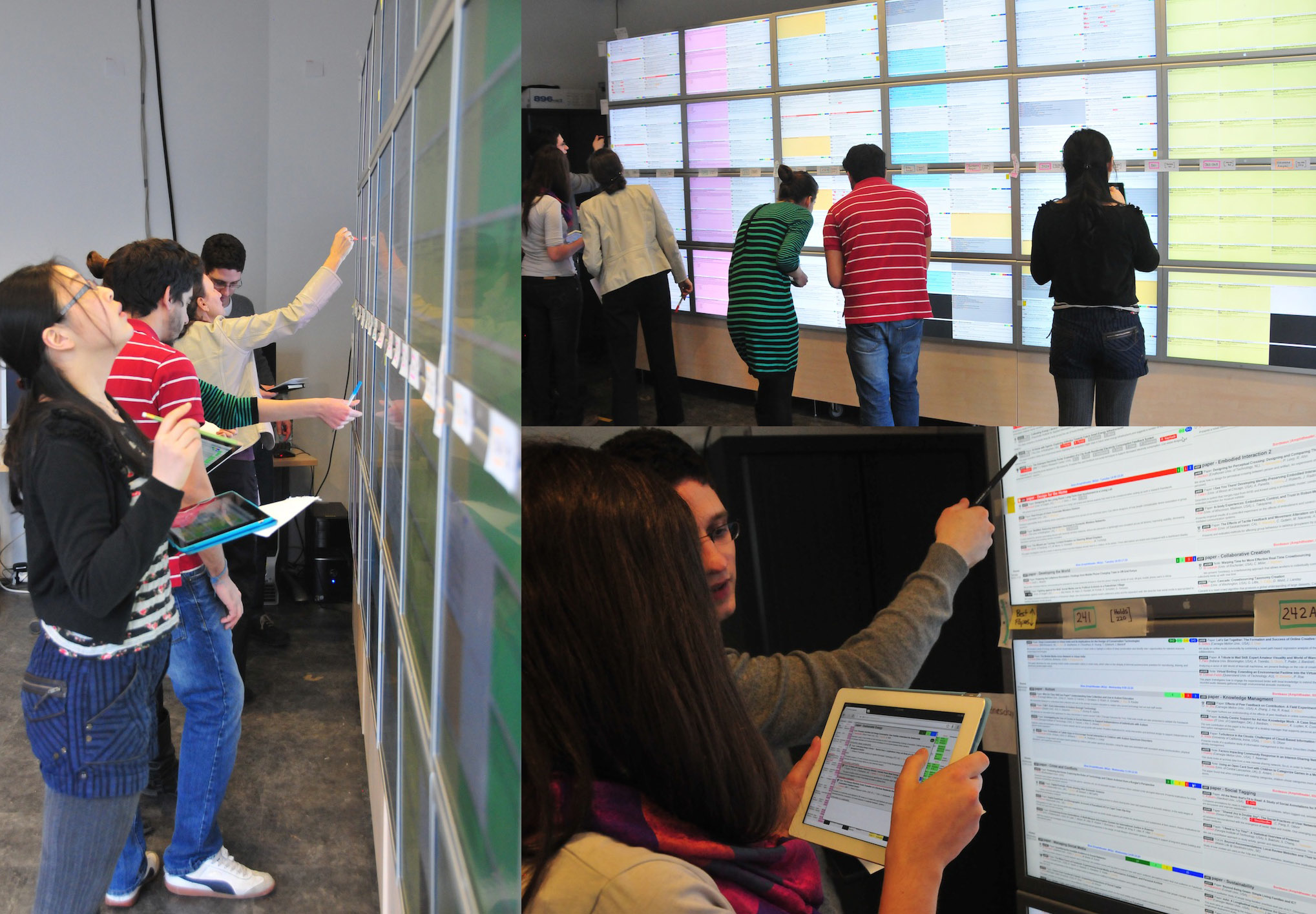Section: New Results
Engineering of interactive systems
Participants : Caroline Appert, Michel Beaudouin-Lafon [correspondant] , Olivier Chapuis, Stéphane Huot, Wendy Mackay.
InSitu has a long tradition of developing software tools and user interface toolkits to facilitate the creation of interactive systems. These tools allow us to better experiment with our ideas and are therefore an integral part of our research methodology. Most of them are freely available and some are used outside InSitu for research or teaching.
Our work has focused on developing middleware for the WILD platform, InSitu's experimental ultra-high-resolution interactive room for studying collaborative interaction and the visualization of very large datasets [2] . WILD features a wall-sized display with 32 monitors, a multitouch table, a motion-tracking system and various mobile devices. Running applications on WILD requires developing advanced distributed systems that coordinate, in real time, the 16 computers of the cluster driving the wall display with a variety of clients and servers running on other computers, including mobile devices.
We investigated the use of Web standards and protocols to develop and deploy such applications. Hydrascope [24] introduces the concept of meta-application that combines, adapts and/or repurposes existing web applications for an environment such as WILD. It uses a web browser (or even a web engine, e.g. WebKit) as a rendering and interaction toolkit and Web protocols (HTTP and WebSockets) for communication. We demonstrated how to control a wall-size presentation tool built on Google Present and a wall-size map built on Google Maps without modifying these applications but by taking advantage of the capability of web applications for introspection.
This approach was used to develop CHIWall, an application designed to help us schedule the CHI 2013 conference that InSitu chaired this year in Paris. The resulting tool combines a wall-size display of the full program with a constraint-detection and constraint-solving assistant called Cobi [26] , which itself uses crowd-sourced information from the authors. The resulting application supports collaborative work to fine-tune the program (Figure 11 ) and features a flexible architecture that has been reused for other prototype applications.
|
In summary, InSitu has continued to make significant progress towards mature toolkits that support post-WIMP and distributed user interfaces. These toolkits, in turn, have enabled us to experiment with novel interaction techniques using rapid prototyping. Conversely, our work on novel interaction techniques has driven the development of software toolkits that embody their underlying principles, facilitating further exploration. This back-and-forth between techniques, methods and tools is a defining feature of InSitu, captured by the Designeering Interaction [11] framework. As the focus of our research on interaction techniques has shifted from on-the-desktop to off-the-desktop, this approach has proven more valid than ever: improving interaction in such environments requires more complex software architectures and tools; in turn, these tools and architectures are a key step to getting these technologies outside the lab.


